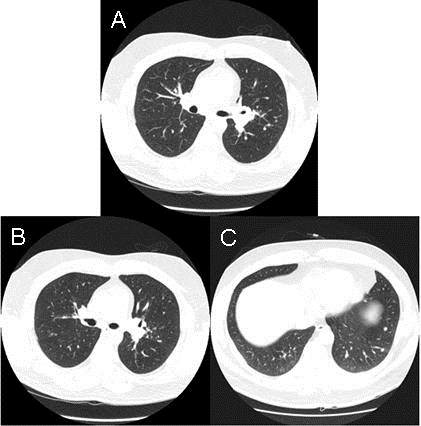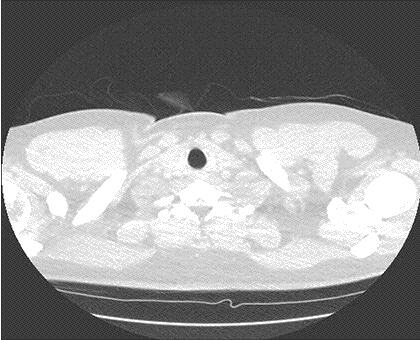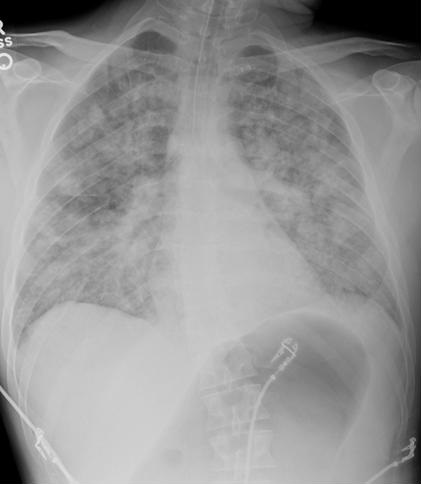Richard A. Robbins, MD1
Lewis J. Wesselius, MD2
1The Phoenix Pulmonary and Critical Care Research and Education Foundation
Gilbert, AZ
2Mayo Clinic Arizona
Scottsdale, AZ
Abstract
CMS' Hospital Readmissions Reduction Program (HRRP) was extended to chronic obstructive pulmonary disease (COPD) exacerbations in October 2014. HRRP penalizes hospitals if admissions for COPD exacerbations exceed a higher than expected all-cause 30-day readmission rate. Recently, a review of 191,698 Medicare readmissions after a COPD exacerbation reported that COPD explained only 27.6% of all readmissions. Patients were more likely to be readmitted if they were discharged home without home care, dually enrolled in Medicare and Medicaid, and had more comorbidities (p<0.001 compared to patients not readmitted). Data on interventions is limited but recently a study of bundled interventions of smoking cessation counseling, screening for gastroesophageal reflux disease and depression or anxiety, standardized inhaler education, and a 48-h postdischarge telephone call did not result in a lower readmission rate. We conclude that there is limited evidence available on readmission risk factors, reasons for readmission and interventions that might reduce readmissions. In the absence of defined, validated interventions it seems likely that CMS's HRRP will be unsuccessful in reducing hospital readmissions after a COPD exacerbation.
Introduction
To address rising costs and quality concerns, the Hospital Readmissions Reduction Program (HRRP) was enacted, targeting inpatient discharges in the Medicare fee-for-service population for congestive heart failure (CHF), acute myocardial infarction (AMI), and pneumonia in 2012. HRRP was extended to chronic obstructive pulmonary disease (COPD) exacerbations in October 2014.
Correlation of Readmissions with Outcomes
There were about 800,000 hospitalizations for COPD exacerbations annually, with about 20% of patients needing to be rehospitalized within 30 days of discharge (2,3). The cost of readmissions is about $325 million for the U.S. Centers for Medicare and Medicaid Services (CMS) (4). Therefore, it is hardly surprising that CMS is attempting to reduce COPD readmission to reduce costs. The implication is that care was incomplete or sloppy on the first admission, and that better care might reduce readmissions.
However, a number of concerns have been raised questioning the wisdom of the HRRP. Hospitals with better mortality rates for heart attacks, heart failure and pneumonia had significantly greater penalties for readmission rates (5). If this correlation is found to be true with randomized trials, then CMS is financially encouraging hospitals to perform an action with potential patient harm and suggest that CMS continues to rely on surrogate markers that have little or no correlation with patient-centered outcomes. Until this question is resolved, we cannot recommend programs that discourage hospital readmissions.
Differences between COPD Exacerbations and CHF, AMI and Pneumonia Methodology
Several aspects of COPD exacerbations differentiate it from other conditions included in HRRP. AMI, CHF, pneumonia and COPD exacerbations are all defined by discharge ICD-9 codes. Examination of ICD-9 coding against physician chart review found profound underestimation of COPD exacerbations, with sensitivities ranging from 12% to 25% and positive predictive values as low as 81.5% (6). In contrast, coding data to identify pneumonia and AMI have a sensitivity and positive predictive value of over 95% (7,8). Therefore, there is a high probability of misclassification of COPD exacerbations used to calculate the readmissions penalty.
COPD exacerbations are clinically defined while AMI and CHF are defined by biomarkers (plasma troponin, B-type natriuretic peptide) and pneumonia is defined by not only a compatible clinical situation but by consolidation on chest radiography. Because COPD symptoms overlap with many other diseases, biomarker and radiograph evidence can make accurate diagnosis difficult. Furthermore, this uncertainty in diagnosis may provide an opportunity for hospitals to game the system by excluding sicker patients who present with COPD from the readmission measure (9).
COPD may also require prolonged times for recovery as opposed to AMI, CHF, and pneumonia patients who seem to require shorter recovery times. One quarter of patients with a COPD exacerbation had not returned to preexacerbation peak expiratory flow rate by day 35 (10).
There is also a suggestion of a frequent exacerbation phenotype of COPD independent of disease severity (11). The single best predictor of exacerbations was a history of exacerbations, although a history of gastroesophageal reflux (GERD) was also associated with increased exacerbations. A hospital with higher numbers of patients with the frequent exacerbation phenotype or with GERD would be expected to have a higher readmission rate but would be penalized under CMS' HRRP.
Causes for Readmission after a COPD Exacerbation
Most patients readmitted after a COPD exacerbation are not readmitted for COPD. Shah et al. (9) recently examined nearly 200,000 COPD exacerbation hospital readmissions in the Medicare population. Only 27.6% were classified as being readmitted for COPD. There were a variety of readmission diagnosis with respiratory failure, pneumonia, CHF, asthma, septicemia, cardiac dysrhythmias, fluid and electrolyte disorders, intestinal infection, and non-specific chest pain and other accounting for the rest. This data is consistent with previous studies by Jencks et al. (12) who found 36.2% of exacerbation patients were readmitted for COPD. Not surprisingly, the sickest patients (as defined by the Charlson sum) are more likely to be readmitted (9). This would also be consistent with causes of readmission being diverse rather than limited to COPD.
Importantly, two observations were made which may have major implications for care after COPD exacerbations (9). First, patients dually enrolled in Medicare and Medicaid had higher readmission rates. These patients tend to be poorer and seek care at "safety net" hospitals. A penalty for readmissions would be largest at these hospitals which may most in need of financial help. Second, patients discharged home without home care were more likely to be readmitted. This will likely influence more discharges to either an extended care facility or with home care which may actually increase costs rather than result in the cost savings that CMS hopes to collect.
Interventions that Reduce COPD Readmissions
Jennings et al. (13) used a "bundle" for patients with COPD exacerbations in hopes of reducing readmissions and emergency department visits. The bundle consisted of smoking cessation counseling, screening for gastroesophageal reflux disease and depression or anxiety, standardized inhaler education, and a 48 hour postdischarge telephone call. It is easy to criticize these interventions. A single session of smoking cessation counseling is usually inadequate (14). Although gastroesophageal reflux disease has been associated with COPD, there is only a single trial with lansoprazole demonstrating a reduction in COPD exacerbations (15). To our knowledge there is no data on screening for depression or anxiety, standardized inhaler education and a single phone call in preventing COPD readmissions. Not surprisingly, the bundle did not work. However, it underscores that interventions to prevent COPD readmissions are unknown. Until these are defined, it seems unlikely that any program will be successful in reducing COPD readmissions.
Potential COPD Readmission Reduction Strategies
Discharge and Follow-Up
Discharge to an extended care facility or with home care reduces readmissions (9). Approximately one third of readmissions after hospitalization for COPD occur within 7 days of discharge and 60% occur within 15 days (9). Therefore, even close outpatient followup within 2 weeks of discharge from the hospital, may not prevent a majority of readmissions. However, we would recommend that close follow-up of patients be liberal which seems likely to have some impact on readmissions. Follow-up telephone calls may be reasonable but probably need to be more than a single call at 48 hours (13). We offer some additional suggestions below that have not been subjected to randomized trials, but seem reasonable based on the current state of knowledge.
Pharmacologic Therapy
- Bronchodilators. Many of the therapies that treat COPD exacerbations have been tested to determine if chronic use might prevent exacerbations. The best evidence is for the long-acting bronchodilators. Two large randomized controlled trials have confirmed that a combination of a long-acting beta agonist (salmeterol) with an inhaled corticosteroid (fluticasone) or a long-acting anticholinergic (tiotropium) reduce exacerbations (16,17). Given that only about one-third of readmissions are due to COPD, the impact, if any, with addition of long-acting bronchodilators after a COPD exacerbation would likely be small. The newer long-acting beta agonists and anticholinergics would also be expected to reduce exacerbations and might prevent readmissions.
- Inhaled corticosteroids. Addition of inhaled corticosteroids to long-acting bronchodilators in COPD remains controversial. A meta-analysis by Spencer et al. (18) recommended regular inhaled corticosteroid therapy as an adjunct in patients experiencing frequent exacerbations. However, the data supporting this recommendation is unclear. It is also unclear if their addition would prevent readmissions.
- Antibiotics. Continuous or intermittent treatment with some antibiotics, particularly macrolides, reduces exacerbations. Treatment with azithromycin for one year lowered exacerbations by 27% (19). Although the mechanism(s) accounting for the reduction in exacerbations is unknown, current concepts suggest the reduction is likely secondary to the macrolides’ anti-inflammatory properties. However, concern has been raised about a very small, but significant, increase in QT prolongation and cardiovascular deaths with azithromycin (20). In addition, the recent trial with azithromycin raised the concern of hearing loss which occurred in 25% of patients treated with azithromycin compared to 20% of control (19). An alternative to the macrolides may be tetracyclines such as doxycycline, which also possess anti-inflammatory properties but do not lengthen QT intervals nor cause hearing loss (21). Similar to the long-acting bronchodilators, antibiotics might reduce readmissions, but since most readmissions are not due to COPD, the effect would likely be small.
- Medication Compliance. Poor compliance with inhaled therapies has been implicated as a factor contributing to COPD exacerbations (22). The role of COPD medication noncompliance has not been specifically assessed in hospital readmissions, although it seems likely to be a contributing factor. Socioeconomic factors influence medication compliance and could lead to greater readmission rates in hospitals caring for patients with limited financial and social resources. Poor compliance with COPD medications as well as medications for comorbid conditions may both be important as most readmissions are not due to COPD.
Conclusions
Prevention of COPD readmissions after a COPD exacerbation represents a challenge with no straight-forward strategies to reduce readmissions other than discharge to an extended care facility or home with home health. Readmissions come from heterogeneous causes but most are not due to COPD suggesting that comprehensive care for disorders other than just COPD is likely important.
References
- Centers for Medicare and Medicaid Services. Readmissions reduction program. Available at: http://www.cms.gov/Medicare/Medicare-Fee-for-Service-Payment/AcuteInpatientPPS/Readmissions-Reduction-Program.html (accessed 6/4/15).
- Wier LM, Elixhauser A, Pfuntner A, Au DH. . Overview of hospitalizations among patients with COPD, 2008: Statistical Brief #106. Healthcare Cost and Utilization Project (HCUP) Statistical Briefs [Internet]. Rockville, MD: Agency for Health Care Policy and Research (US); 2006–2011 Feb. Available from: http://www.hcup-us.ahrq.gov/reports/statbriefs/sb106.pdf (accessed 5/4/15)
- Elixhauser A, Au DH, Podulka J. . Readmissions for chronic obstructive pulmonary disease, 2008: Statistical Brief #121. Healthcare Cost and Utilization Project (HCUP) Statistical Briefs [Internet]. Rockville, MD: Agency for Health Care Policy and Research (US); 2006–2011 Sep. Available from: http://www.hcup-us.ahrq.gov/reports/statbriefs/sb121.pdf (accessed 6/4/15).
- Medicare Payment Advisory Commission (MEDPAC). Report to the Congress: promoting greater efficiency in Medicare, 2007.
- Robbins RA, Gerkin RD. Comparisons between Medicare mortality, morbidity, readmission and complications. Southwest J Pulm Crit Care. 2013;6(6):278-86.
- Stein BD, Bautista A, Schumock GT, Lee TA, Charbeneau JT, Lauderdale DS, Naureckas ET, Meltzer DO, Krishnan JA. The validity of International Classification of Diseases, Ninth Revision, Clinical Modification diagnosis codes for identifying patients hospitalized for COPD exacerbations. Chest. 2012;141(1):87-93. [CrossRef] [PubMed]
- Skull SA, Andrews RM, Byrnes GB, et al. ICD-10 codes are a valid tool for identification of pneumonia in hospitalized patients aged ≥ 65 years. Epidemiol Infect. 2008;136(2):232-40. [CrossRef] [PubMed]
- Kiyota Y, Schneeweiss S, Glynn RJ, Cannuscio CC, Avorn J, Solomon DH. Accuracy of Medicare claims-based diagnosis of acute myocardial infarction: estimating positive predictive value on the basis of review of hospital records. Am Heart J. 2004;148(1):99-104. [CrossRef] [PubMed]
- Shah T, Churpek MM, Coca Perraillon M, Konetzka RT. Understanding why patients with COPD get readmitted: a large national study to delineate the medicare population for the readmissions penalty expansion. Chest. 2015;147(5):1219-26. [CrossRef] [PubMed]
- Seemungal TA, Donaldson GC, Bhowmik A, Jeffries DJ, Wedzicha JA. Time course and recovery of exacerbations in patients with chronic obstructive pulmonary disease. Am J Respir Crit Care Med. 2000;161(5):1608-13. [CrossRef] [PubMed]
- Hurst JR, Vestbo J, Anzueto A, Locantore N, Müllerova H, Tal-Singer R, Miller B, Lomas DA, Agusti A, Macnee W, Calverley P, Rennard S, Wouters EF, Wedzicha JA; Evaluation of COPD Longitudinally to Identify Predictive Surrogate Endpoints (ECLIPSE) Investigators. Susceptibility to exacerbation in chronic obstructive pulmonary disease. N Engl J Med. 2010;363(12):1128-38. [CrossRef] [PubMed]
- Jencks SF, Williams MV, Coleman EA. Rehospitalizations among patients in the Medicare fee-for-service program. N Engl J Med. 2009;360(14):1418-28. [CrossRef] [PubMed]
- Jennings JH, Thavarajah K, Mendez MP, Eichenhorn M, Kvale P, Yessayan L. Predischarge bundle for patients with acute exacerbations of COPD to reduce readmissions and ed visits: a randomized controlled trial. Chest. 2015;147(5):1227-34. [CrossRef] [PubMed]
- Rigotti NA, Munafo MR, Stead LF. Smoking cessation interventions for hospitalized smokers: A systematic review. Arch Intern Med. 2008;168:1950-60. [CrossRef] [PubMed]
- Sasaki T, Nakayama K, Yasuda H, Yoshida M, Asamura T, Ohrui T, Arai H, Araya J, Kuwano K, Yamaya M. A randomized, single-blind study of lansoprazole for the prevention of exacerbations of chronic obstructive pulmonary disease in older patients. J Am Geriatr Soc. 2009;57(8):1453-7. [CrossRef] [PubMed]
- Calverley PM, Anderson JA, Celli B, Ferguson GT, Jenkins C, Jones PW, Yates JC, Vestbo J; TORCH investigators. Salmeterol and fluticasone propionate and survival in chronic obstructive pulmonary disease. N Engl J Med. 2007;356:775-89. [CrossRef] [PubMed]
- Tashkin DP, Celli B, Senn S, Ferguson GT, Jenkins C, Jones PW, Yates JC, Vestbo J; TORCH investigators. A 4-year trial of tiotropium in chronic obstructive pulmonary disease. N Engl J Med. 2008;359:1543-54. [CrossRef] [PubMed]
- Spencer S, Karner C, Cates CJ, Evans DJ. Inhaled corticosteroids versus long-acting beta(2)-agonists for chronic obstructive pulmonary disease. Cochrane Database Syst Rev. 2011 Dec 7;(12):CD007033. [PubMed]
- Albert RK, Connett J, Bailey WC, Casaburi R, Cooper JA Jr, Criner GJ, Curtis JL, Dransfield MT, Han MK, Lazarus SC, Make B, Marchetti N, Martinez FJ, Madinger NE, McEvoy C, Niewoehner DE, Porsasz J, Price CS, Reilly J, Scanlon PD, Sciurba FC, Scharf SM, Washko GR, Woodruff PG, Anthonisen NR; COPD Clinical Research Network. COPD Clinical Research Network. Azithromycin for prevention of exacerbations of COPD. N Engl J Med. 2011; 365:689-98. [CrossRef] [PubMed]
- Ray WA, Murray KT, Hall K, Arbogast PG, Stein CM. Azithromycin and the risk of cardiovascular death. N Engl J Med. 2012;366:1881-90. [CrossRef] [PubMed]
- Rempe S, Hayden JM, Robbins RA, Hoyt JC. Tetracyclines and pulmonary inflammation. Endocr Metab Immune Disord Drug Targets. 2007;7:232-6. [CrossRef] [PubMed]
- Ismaila A, Corriveau D, Vaillancort J, Parsons D, Dalal A, Su Z, Sampalis JS. Impact of adherence to treatment with tiotropium and fluticasone propionate/salmeterol in chronic obstructive pulmonary disease patients. Curr Med Res Opin. 30(7);1427-36, 2014. [CrossRef] [PubMed]
Reference as: Robbins RA, Wesselius LJ. Reducing readmissions after a COPD exacerbation: a brief review. Southwest J Pulm Crit Care. 2015;11(1):19-24. doi: http://dx.doi.org/10.13175/swjpcc089-15 PDF
 Thursday, October 1, 2015 at 8:00AM
Thursday, October 1, 2015 at 8:00AM 







